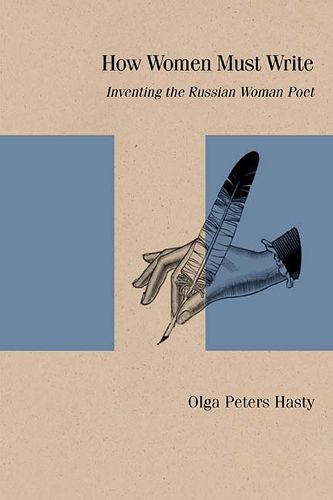Readings Newsletter
Become a Readings Member to make your shopping experience even easier.
Sign in or sign up for free!
You’re not far away from qualifying for FREE standard shipping within Australia
You’ve qualified for FREE standard shipping within Australia
The cart is loading…






How Women Must Write studies how women who write poems were invented in late nineteenth and early twentieth-century Russia by women poets themselves, readers who derived poets of their own design from women’s poems, and male poets who fabricated women and wrote poems on their behalf. These distinct vantage points on how the Russian woman poet is constituted foreground the complex interactions between writing women and their readers within ever-shifting social, political, and cultural power structures.
Hasty’s exploration takes us from an emphatically male Romantic age to a modernist period preoccupied with women’s creativity but also its containment. Each chapter studies an episode from Russian cultural history. The first part explores the successes and vulnerabilities of Karolina Pavlova and Evdokiia Rostopchina, who lay the groundwork for women writing after them. The second part examines two women invented by men: Cherubina de Gabriak and Briusov’s Nelli, who reflect the establishment’s efforts to retain command over women’s writing in the Silver Age. Last, Hasty examines Marina Tsvetaeva’s and Anna Akhmatova’s challenges to male authority.
Illuminating these writers and characters not as passive victims of gender-driven limitations and disincentives but rather as purposeful actors realizing themselves creatively and advancing the woman poet’s cause, How Women Must Write will appeal to the general reader as well as to specialists in Russian literature, women’s studies, and cultural history.
$9.00 standard shipping within Australia
FREE standard shipping within Australia for orders over $100.00
Express & International shipping calculated at checkout
How Women Must Write studies how women who write poems were invented in late nineteenth and early twentieth-century Russia by women poets themselves, readers who derived poets of their own design from women’s poems, and male poets who fabricated women and wrote poems on their behalf. These distinct vantage points on how the Russian woman poet is constituted foreground the complex interactions between writing women and their readers within ever-shifting social, political, and cultural power structures.
Hasty’s exploration takes us from an emphatically male Romantic age to a modernist period preoccupied with women’s creativity but also its containment. Each chapter studies an episode from Russian cultural history. The first part explores the successes and vulnerabilities of Karolina Pavlova and Evdokiia Rostopchina, who lay the groundwork for women writing after them. The second part examines two women invented by men: Cherubina de Gabriak and Briusov’s Nelli, who reflect the establishment’s efforts to retain command over women’s writing in the Silver Age. Last, Hasty examines Marina Tsvetaeva’s and Anna Akhmatova’s challenges to male authority.
Illuminating these writers and characters not as passive victims of gender-driven limitations and disincentives but rather as purposeful actors realizing themselves creatively and advancing the woman poet’s cause, How Women Must Write will appeal to the general reader as well as to specialists in Russian literature, women’s studies, and cultural history.